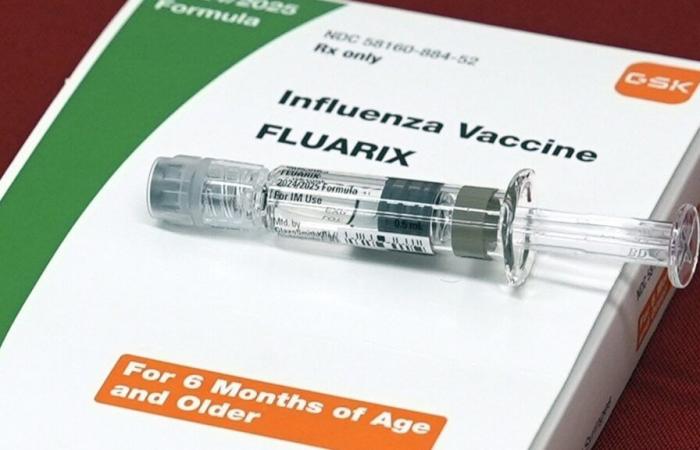New York (AP) – More children in the United States have died this flu season than at any other time since the pig flu 15 years ago, according to a federal report published on Friday.
The 216 pediatric deaths reported by the Centers for Disease Control and Prevention (CDC) exceed 207 that occurred last year. It is the highest figure from the World H1N1 Pandemic of 2009-2010.
It is a surprisingly high number, since the flu season does not end. The final count of children’s deaths for the flu season 2023-2024 was not counted until autumn.
Dr. Sean O’Leary, of the American Academy of Pediatrics, said: “The figure we have now is, almost certainty, a sub -registration, and it is almost certain that it will increase when the end of the season is declared and all the data is compiled.”
There are probably several factors that contribute to the seriousness of this season, but an important one is that fewer children receive flu vaccines, added O’Leary, a specialist in pediatric infectious diseases at Colorado University.
The flu vaccination rate for children in the United States has fallen from 64% five years ago to 49% this season.
Flu vaccines do not prevent people from presenting symptoms, but investigations show that they are very effective in preventing hospitalizations and deaths, O’Leary said.
The season has not only been difficult for children. The CDC authorities have described it as “very severe” and estimate that, so far, at least 47 million people have ill, 610,000 have been hospitalized and 26,000 have died this season.
The CDC authorities have information on underlying conditions in almost 5,200 adults who were hospitalized with flu this season, and 95% had at least one pre -existing Health problem. But of 2,000 hospitalized children with more detailed health information, only around 53% had an underlying condition, such as asthma and obesity.
The CDC report does not indicate how many of the children who died were vaccinated. The agency did not make available an expert to talk about the flu season.
The good news is that the flu indicators have decreased since February, and last week the 50 states reported a low or minimal flu activity.
In this season there has been more a mixture of flu strains in circulation than in many other years, and two different strains of type A, the H1N1 and the H3N2, are those that have caused many infections. But the CDC data published earlier this year indicate that flu vaccines have managed to prevent deaths and hospitalizations.
CDC continues to recommend that all people six months and older receive an annual flu vaccine.
Children’s vaccination in general has been decreasing due to online misinformation and the political division that arose around vaccines against COVID-19. Robert F. Kennedy Jr. has also repeated part of the rhetoric of anti -vaccine activists since he assumed the position of Secretary of Health of the country.
But there could be other reasons why less children received flu vaccines this year, O’Leary said.
Many pediatric offices have little personal and do not make as many vaccination sessions out of time as in the past. In addition, there are more Americans who are vaccinated in pharmacies, but some of them do not offer vaccines for children, he said.
“My hope is that this season is a call for attention for people that we really need to vaccinate our children against influenza,” O’Leary said.
___
The Department of Health and Science of The Associated Press receives support from the Science and Education Media Group of the Howard Hughes Medical Institute and Robert Wood Johnson Foundation. The AP is solely responsible for all content.
___
This story was translated from English by an AP editor with the help of a generative artificial intelligence tool.






